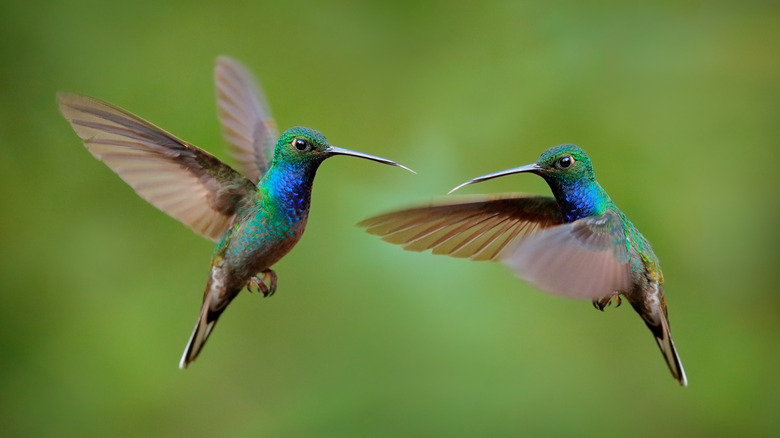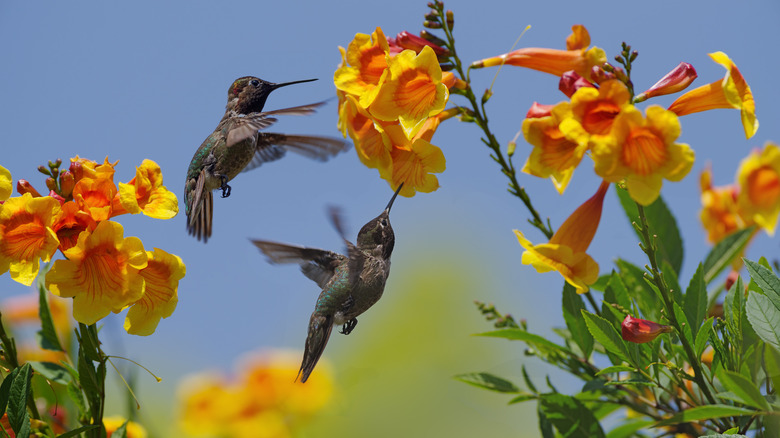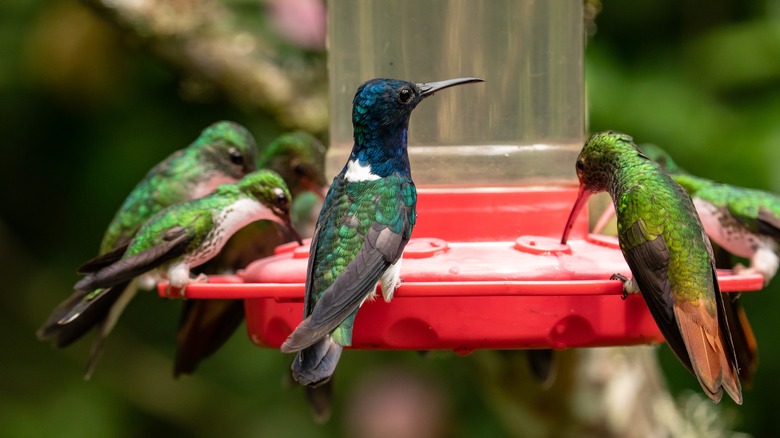The Benefits Of Attracting Hummingbirds To Your Yard
As the tiniest cute acrobats of the avian world, hummingbirds never fail to captivate us with their iridescent plumage and rapid wing beats. These diminutive creatures belong to the family Trochilidae and are found exclusively in the Americas, from Alaska to Tierra del Fuego in South America. While their small size may deceive, hummingbirds play a vital role in our ecosystem as pollinators, making them highly desirable guests in any yard or garden.
Hummingbirds are often associated with beauty, grace, and agility. Their ability to hover mid-air and maneuver with precision is a spectacle to behold. Beyond their aesthetic appeal, these feathery wonders contribute significantly to the natural world and our gardening experiences. Besides adding visual interest and charm to our yards and being efficient pollinators, hummingbirds contribute to the overall biodiversity and ecological balance in any setting where they thrive. They also provide natural pest control services, helping to keep bugs out of your garden in an eco-friendly manner.
The ecological importance of hummingbirds
Hummingbirds are master pollinators, transferring pollen from flower to flower as they feed on nectar. Their role in the pollination process ensures the reproduction of several plant species, including ones that we rely on for food. Without hummingbirds, the delicate balance of our ecosystems would be disrupted, leading to cascading effects on biodiversity. Also, like the rest of the animal world, hummingbirds are indicators of environmental health. Their presence in an area signifies the availability of suitable habitats and resources. By attracting and supporting hummingbird populations, we indirectly help maintain the overall well-being of our ecosystems.
While hummingbirds primarily rely on flower nectar as their main energy source, they supplement their diet with small insects, spiders, and other arthropods. They're voracious insect hunters, capturing a wide variety of flying and crawling pests in their beaks. Common garden pests such as mosquitoes, gnats, aphids, and caterpillars are among the insects on their menu. By feeding on these pests, hummingbirds help to control their populations naturally, reducing the need to use chemical pesticides in the garden. Their rapid wing beats and agile flight maneuvers make hummingbirds highly efficient predators, able to snatch insects out of mid-air or pluck them from leaves and flowers with precision. With the many benefits they offer, it's no wonder hummingbird conservation efforts exist not only to preserve but also to protect these charismatic avians. From maintaining genetic diversity to ensuring ecosystem resilience, the conservation of hummingbirds aligns with broader environmental conservation goals.
Attracting hummingbirds to your garden
Creating a hummingbird-friendly garden is easier than you might think, though it requires thoughtful consideration of their specific needs. Start by planting a diverse array of nectar-rich flowers like trumpet vine, bee balm, salvia, fuchsia, columbine, and cardinal flower. Plant a variety of these flowers to provide a continuous nectar supply to fuel hummingbirds' need to sustain their energetic lifestyles. In addition to flowers, consider hanging hummingbird feeders filled with a homemade nectar solution (4 parts water to 1 part sugar) in your garden. Opt for feeders with bright red, orange, and pink accents to attract the birds' attention. Place feeders in visible and accessible locations, away from windows to prevent collisions. Keep them clean and free of mold to prevent harm to visiting birds. Hummingbirds need water for drinking and bathing, especially during hot weather. Install a shallow birdbath or a small water feature with a gentle dripping or misting mechanism to attract birds. Keep the water clean and fresh, and place rocks or pebbles in the water to provide perches for them.
Hummingbirds need sheltered areas for resting and protection from predators. Plant dense shrubs, trees, and vines to provide cover for hummingbirds. Provide spots for nesting and resting, such as small shrubs, branches, or trellises, and minimize pesticide use to ensure the safety of hummingbirds and their offspring. With a little effort and foresight, you can transform your garden into a haven for hummingbirds, enriching both your yard and the broader ecosystem.


